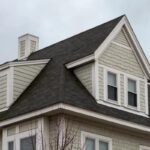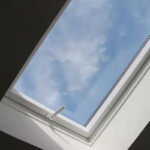Flat roofs are a popular choice for both commercial and residential buildings due to their modern aesthetic and cost-effectiveness. However, maintaining a flat roof can present unique challenges, such as water pooling and UV damage. Roof coatings have emerged as an effective solution to these issues, offering a range of benefits that enhance the longevity and performance of flat roofs. Whether you own a commercial property or a residential home, understanding the benefits of roof coatings can lead to significant savings and improved roof durability.
What Is a Flat Roof Coating?
A flat roof coating is a liquid-applied membrane that forms a seamless barrier over your roof. It is typically made from materials such as acrylic, silicone, or elastomeric compounds. These coatings are designed to adhere to the roof surface, providing a protective layer that guards against weather damage, water infiltration, and UV radiation.
The primary function of a flat roof coating is to extend the life of your roof by minimizing deterioration caused by environmental factors. Unlike traditional roofing materials, coatings offer a smooth, reflective surface that aids in temperature regulation and energy conservation. This characteristic makes them an attractive option for building owners looking to enhance their roof’s performance.
Available in various formulations, flat roof coatings can be tailored to meet specific environmental and structural needs. Whether your priority is waterproofing, energy efficiency, or UV protection, there is a coating solution designed to address your concerns effectively.
Benefits of Flat Roof Coatings for Commercial Buildings
Commercial buildings often face greater wear and tear due to their size and exposure to harsh weather conditions. Flat roof coatings offer numerous benefits that make them particularly advantageous for commercial properties. One of the primary advantages is the reduction in maintenance costs. By applying a roof coating, you can prevent leaks and other damage, minimizing the need for frequent repairs.
Additionally, roof coatings enhance the energy efficiency of commercial buildings. Reflective coatings reduce heat absorption, lowering cooling costs during the summer months. This energy-saving feature not only contributes to a reduced carbon footprint but also results in substantial financial savings over time.
Moreover, roof coatings can improve the overall appearance of a commercial building. A well-maintained roof with a fresh coating can positively impact the building’s aesthetic, potentially attracting more tenants or customers. The added protection and improved look can also increase the property’s value, making roof coatings a wise investment for commercial property owners.
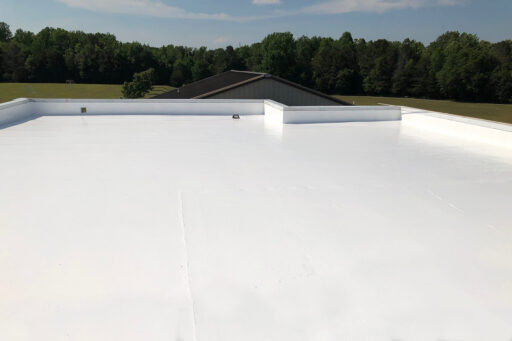
Residential Flat Roof Coating Benefits
For residential properties, flat roof coatings offer a host of advantages that contribute to both comfort and cost savings. One of the primary benefits is improved home insulation. By reflecting sunlight and reducing heat absorption, roof coatings help maintain a consistent indoor temperature, which is particularly beneficial during harsh Canadian winters and sweltering summers.
Another significant advantage is the protection against water damage. Flat roofs are more susceptible to water pooling, which can lead to leaks and structural damage over time. A quality roof coating acts as a waterproof barrier, preventing water infiltration and preserving the integrity of your home’s structure.
In addition to these practical benefits, a roof coating can also enhance the visual appeal of your home. With options available in various colours and finishes, you can choose a coating that matches your home’s exterior style, adding to its overall aesthetic value and potentially increasing its resale value.
Energy-Saving Advantages of Reflective Roof Coatings
Reflective roof coatings are specifically designed to reduce energy consumption by reflecting sunlight and heat away from the building. This reduction in heat absorption decreases the demand on air conditioning systems, leading to lower energy bills. For both residential and commercial buildings, this energy efficiency is a significant benefit.
The reflective properties of these coatings also help mitigate the urban heat island effect, a condition where urban areas experience higher temperatures than their rural surroundings. By reducing the heat absorbed by buildings, reflective coatings contribute to cooler urban environments, offering a collective environmental advantage.
Incorporating reflective roof coatings into your building’s design can also extend the life of your roof by decreasing thermal shock. The constant expansion and contraction due to temperature fluctuations can lead to material fatigue. Reflective coatings stabilize these temperature changes, reducing stress on the roofing materials and prolonging their lifespan.
Waterproof Roof Coatings for Leak Prevention
Waterproof roof coatings are essential for preventing leaks and water damage, a common issue with flat roofs. These coatings create a seamless, impermeable barrier that prevents water from penetrating the roof surface. This is especially important in areas prone to heavy rainfall or snow.
By applying a waterproof coating, you protect your building’s interior from potential water damage, which can lead to costly repairs and structural issues. This preventative measure is a cost-effective solution compared to the expenses associated with water damage remediation.
Waterproof coatings also offer the advantage of maintaining their integrity over time. Unlike traditional roofing materials that can deteriorate, coatings remain flexible and adhere to the roof surface, ensuring long-term protection against leaks. This feature makes them a reliable choice for maintaining a dry and secure building environment.
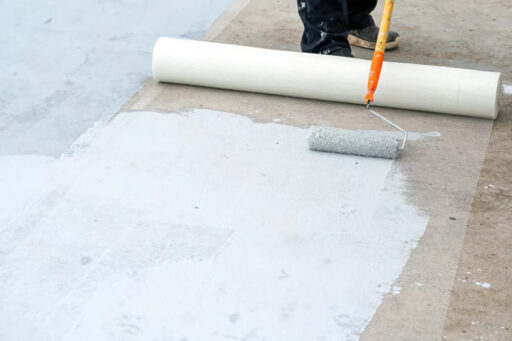
Comparing Elastomeric vs Acrylic Roof Coatings
When choosing a roof coating, it’s important to consider the differences between elastomeric and acrylic coatings. Elastomeric coatings are known for their flexibility and durability. They can expand and contract with the roof surface, making them ideal for environments with temperature fluctuations. This elasticity helps prevent cracking and extends the life of the roof.
In contrast, acrylic coatings are valued for their reflective properties and ease of application. They provide excellent UV protection, reducing heat absorption and energy costs. Acrylic coatings are water-based, making them environmentally friendly and easy to clean up after application.
While both types of coatings offer significant benefits, the choice ultimately depends on your specific needs and environmental conditions. Consider factors such as climate, roof material compatibility, and budget when selecting the most suitable coating for your flat roof.
How Flat Roof Coatings Extend Roof Lifespan
One of the most compelling reasons to invest in a flat roof coating is its ability to prolong the life of your roof. Coatings protect the roof surface from harmful UV rays, moisture, and temperature extremes. By shielding the roof from these elements, coatings prevent the deterioration that can lead to costly repairs or replacements.
Additionally, roof coatings can bridge small cracks and seams, providing a seamless surface that reduces the risk of future damage. This added protection ensures that even older roofs can enjoy extended lifespan with minimal maintenance.
Regular application of roof coatings can also enhance the structural integrity of your roof. By maintaining a robust, protective layer, you can avoid the structural fatigue that often leads to leaks and other issues. This preventative measure is a cost-effective way to maximize your roof’s lifespan and protect your investment.
The Right Way to Coat Your Flat Roof for Maximum Protection
Applying a flat roof coating system involves several critical steps to ensure optimal performance and longevity. The first step is a thorough cleaning of the roof surface to remove dirt, debris, and any existing coating. This preparation is crucial for ensuring proper adhesion of the new coating.
Once the roof is clean, you should inspect it for any damage or leaks that need to be repaired before coating application. Addressing these issues beforehand will prevent future complications and ensure a seamless coating process. After repairs, the roof should be primed to enhance the bond between the coating and the roof surface.
The final step is the application of the roof coating itself, which can be done using a brush, roller, or sprayer, depending on the type of coating and roof size. It’s essential to follow the manufacturer’s instructions regarding the number of coats and drying times to achieve the best results. A professional roofing contractor can provide expertise and precision, ensuring that the coating is applied correctly and efficiently.
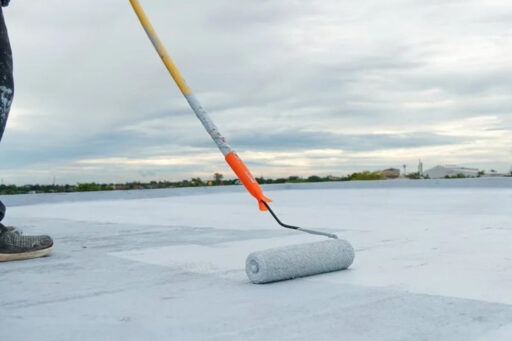
How Much Does a Flat Roof Coating Cost?
The cost of applying a flat roof coating can vary widely based on several factors, including the type of coating used, the size of the roof, and the condition of the existing roof surface. On average, you can expect to pay between $3 to $7 per square foot for a professional roof coating application.
Material costs play a significant role in the overall expense. Elastomeric and silicone coatings tend to be more expensive than acrylic options due to their superior flexibility and durability. However, the investment is often justified by the extended lifespan and reduced maintenance costs they provide.
Labour costs are another consideration, as professional application ensures proper adhesion and performance. While DIY application may seem cost-effective, hiring a professional can prevent potential mistakes and ensure the coating is applied to industry standards. It’s advisable to obtain quotes from multiple contractors to compare prices and services before making a decision.
Summary
Flat roof coatings offer a multitude of benefits that enhance the performance and longevity of your roof. From energy savings and leak prevention to improved aesthetics and reduced maintenance costs, these coatings are a valuable investment for both residential and commercial properties. When selecting a roof coating, consider your specific needs, environmental conditions, and budget. To ensure the best results, consult with a professional roofing contractor who can guide you through the selection and application process.
